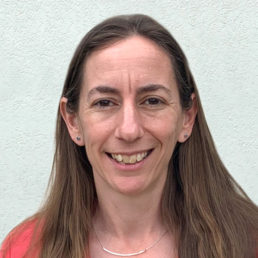From the Interim Program Manager: February 2020

Sally McFarlane, ARM Program Manager, DOE BER
I hope that everyone’s 2020 is off to a good start! The last few months were full of E3SM scientific presentations and meetings with colleagues at the E3SM All Hands meeting in November, AGU in December, and AMS in January. And more to come at the Ocean Sciences meeting in February. It is exciting to see all of the E3SM progress and results presented at these meetings. While attending scientific meetings can mean long hours of preparation and travel, they are a great opportunity for engaging in scientific discussions with colleagues and meeting potential new collaborators. I hope everyone had productive meetings and came away with some inspiration and new ideas for their work.
Somehow, amongst all these meetings, the E3SM team has also been hard at work on the model. The core groups have been putting significant effort into finalizing the features to be included in version 2 of the model. Over the next few months, the hard work of integrating and testing these features in the coupled model will continue. The scientists are also focusing on writing papers with analysis of several key features of E3SM version 1. Meanwhile, the performance group continues to work on making the model faster, with recent improvements in I/O and performance, and scalability of MPAS ocean and sea-ice components among other activities. The infrastructure group has put significant effort into publishing BGC campaign data to ESGF, as well as releasing a new version of the E3SM diagnostics package that adds ENSO diagnostics and a new version of NCO that improves sub-grid scale regridding. Last, but not least, the NGD teams have all been making significant progress in developing new features planned for E3SM version 3.
I would like to draw your attention to an opportunity for outstanding US graduate students to conduct research at the DOE national laboratories. The Office of Science Graduate Student Research (SCGSR) program has just released their biannual solicitation for supplemental awards to students to conduct part of their graduate thesis research at a DOE national laboratory/facility in collaboration with a DOE laboratory scientist for a period of 3 to 12 consecutive months. The supplemental award provides for additional, incremental costs for living and travel expenses directly associated with conducting the SCGSR research project at the DOE host laboratory/facility during the award period. The Biological and Environmental Research program area for the solicitation includes a topic on “Earth System Modeling: Computational Climate Modeling” that may be of interest to the E3SM community. Additionally, there is a new transdisciplinary research area of “Data Science” that includes machine learning, artificial intelligence, and uncertainty quantification and may be of interest. More information is available at the SCGSR program web page https://science.osti.gov/wdts/scgsr/.
This month’s newsletter includes stories on the paper describing the high resolution E3SM v1, new data published to ESGF, the E3SM diagnostics package, new capabilities in NCO, and highlights on several recent publications. We welcome feedback on the newsletter – please let us know what stories and information you find the most valuable. Send email to e3sm-comm@llnl.gov.
Finally, as most of you know, Corinne Hartin has finished her part-time detail at BER and returned full time to her position at PNNL. I want to thank her again for all her work for BER over the past 9 months!
— Sally McFarlane, Interim Program Manager


